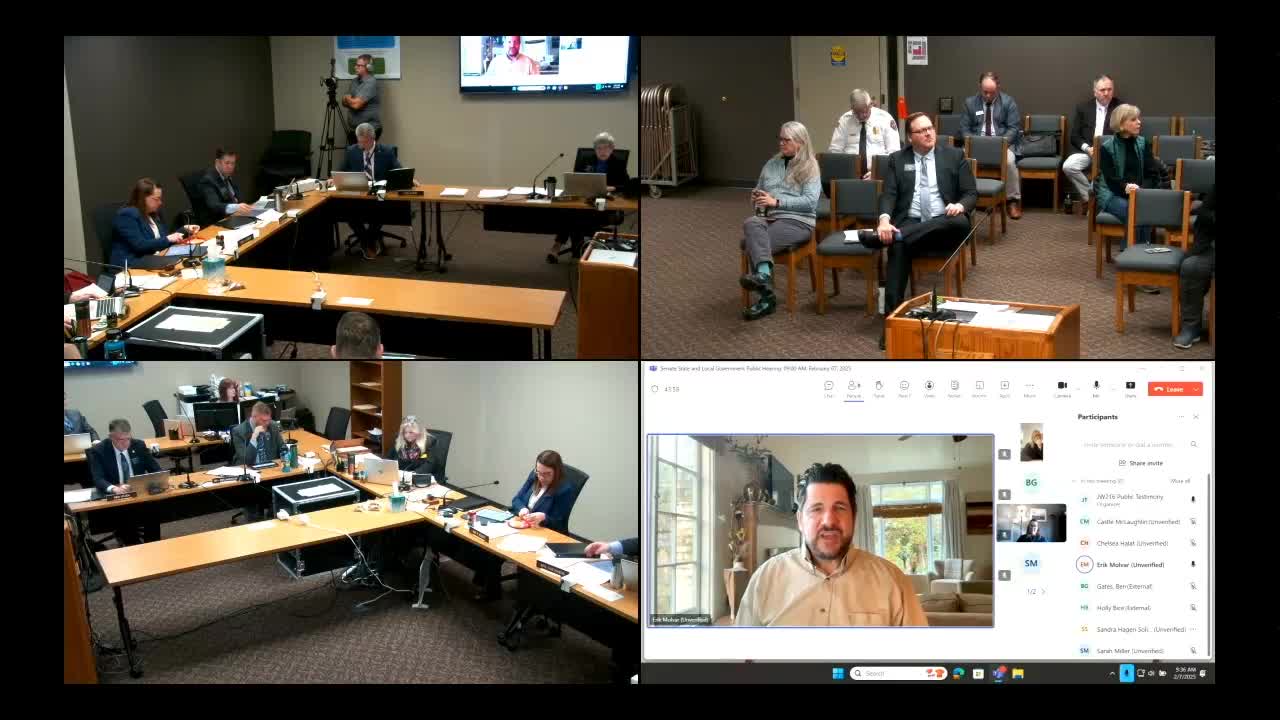Experts warn Gonnakon poses fertility risks for wild horse populations
February 07, 2025 | State and Local Government, Senate, Legislative, North Dakota
This article was created by AI summarizing key points discussed. AI makes mistakes, so for full details and context, please refer to the video of the full meeting. Please report any errors so we can fix them. Report an error »

The Senate State and Local Government meeting held on February 7, 2025, focused on the management of wild horse populations in North Dakota, particularly concerning the use of fertility control measures. A significant point of discussion was the chemical Gonicon, which has raised concerns among wildlife experts due to its potential to cause long-term fertility issues, including permanent sterility in wild horses.
Experts highlighted the importance of maintaining a genetically viable population of wild horses, which requires a minimum effective breeding population of 278 individuals. The meeting underscored that any reduction in breeding mares due to fertility control could jeopardize the genetic diversity necessary for the population's health. The discussion pointed out that if mares are permanently removed from the breeding pool, it could lead to increased inbreeding and associated health problems, such as birth defects and reduced survival rates for offspring.
The current estimated population of wild horses in the Theodore Roosevelt National Park (TRNP) is around 200, raising questions about the adequacy of this number for sustaining genetic viability. The meeting also touched on alternative fertility control methods, such as porcine zona pellucida, which is a temporary solution that allows mares to regain fertility and contribute to the breeding population.
Overall, the discussions highlighted the delicate balance required in wildlife management to ensure the long-term sustainability of wild horse populations while addressing concerns about genetic diversity and population health. The implications of these decisions are critical for the future of wild horse management in North Dakota.
Experts highlighted the importance of maintaining a genetically viable population of wild horses, which requires a minimum effective breeding population of 278 individuals. The meeting underscored that any reduction in breeding mares due to fertility control could jeopardize the genetic diversity necessary for the population's health. The discussion pointed out that if mares are permanently removed from the breeding pool, it could lead to increased inbreeding and associated health problems, such as birth defects and reduced survival rates for offspring.
The current estimated population of wild horses in the Theodore Roosevelt National Park (TRNP) is around 200, raising questions about the adequacy of this number for sustaining genetic viability. The meeting also touched on alternative fertility control methods, such as porcine zona pellucida, which is a temporary solution that allows mares to regain fertility and contribute to the breeding population.
Overall, the discussions highlighted the delicate balance required in wildlife management to ensure the long-term sustainability of wild horse populations while addressing concerns about genetic diversity and population health. The implications of these decisions are critical for the future of wild horse management in North Dakota.
View full meeting
This article is based on a recent meeting—watch the full video and explore the complete transcript for deeper insights into the discussion.
View full meeting
